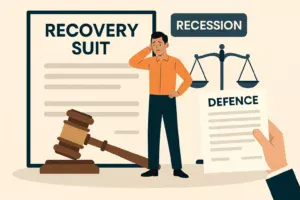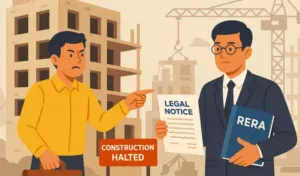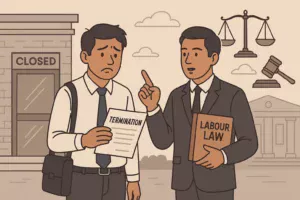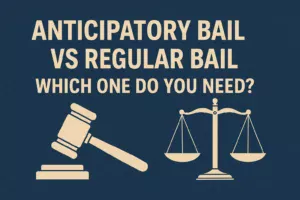Introduction
In recent years, India has witnessed significant changes in its immigration policies, which have had a profound impact on asylum seekers. These changes reflect the country’s evolving stance on migration and its efforts to manage the influx of people seeking refuge within its borders. This article explores how these policy shifts have affected asylum seekers and what it means for their future in India.
Understanding Asylum Seekers
Asylum seekers are individuals who flee their home countries due to fear of persecution based on race, religion, nationality, membership in a particular social group, or political opinion. They seek protection in another country until they can return home safely or are resettled elsewhere.
Recent Changes in Immigration Policy
India has implemented several immigration policy updates aimed at enhancing national security, economic stability, and societal integration. These changes include stricter visa regulations, enhanced border controls, and revised criteria for granting asylum.
Impact Of Recent Immigration Policy Changes On Asylum Seekers In India
Stricter Visa Regulations
The government has introduced more rigorous processes for visa applications, requiring additional documentation and background checks. This move aims to prevent illegal immigration and ensure that only those with genuine reasons enter the country.
Enhanced Border Controls
Increased surveillance and security measures have been implemented at borders to curb unauthorized entry. These measures are part of India’s efforts to manage its borders effectively while addressing security concerns.
Revised Criteria for Granting Asylum
The criteria for granting asylum have been tightened, with a focus on ensuring that only those facing genuine persecution receive protection. This revision aims to streamline the asylum process and prioritize individuals in dire need.
Impact on Asylum Seekers
These policy changes have significantly impacted asylum seekers in India. While the government’s intent is to enhance security and manage immigration more effectively, these measures have also posed challenges for genuine asylum seekers.
Challenges in the Asylum Process
The stricter regulations and revised criteria have made the asylum process more complex and lengthy. Asylum seekers now face more hurdles in proving their eligibility for protection, leading to delays and uncertainties.
Access to Basic Rights and Services
With the tightening of immigration policies, asylum seekers often find it difficult to access basic rights and services, such as healthcare, education, and employment. This lack of access further complicates their already precarious situation.
Human Stories of Hope and Struggle
Behind the statistics and policies are real human stories. Many asylum seekers come to India with hopes of safety and a better life. The recent policy changes have not only affected their legal status but also their everyday lives, filled with challenges and the constant struggle for dignity and security.
Conclusion
The recent immigration policy changes in India have had a significant impact on asylum seekers. While these measures aim to strengthen the country’s immigration system, they also present challenges for those seeking refuge. It is crucial for policies to strike a balance between national security and the humanitarian needs of asylum seekers. By fostering an environment of understanding and support, India can ensure that it remains a place of refuge for those in need.
FAQ on the Impact of Recent Immigration Policy Changes on Asylum Seekers in India
- What is an asylum seeker?
- An asylum seeker is a person fleeing persecution in their home country and seeking safe haven in another country.
- How has India’s immigration policy changed recently?
- India has implemented stricter visa regulations, enhanced border controls, and revised criteria for granting asylum to manage immigration and enhance national security.
- What are the criteria for granting asylum in India?
- Asylum is granted based on the fear of persecution due to race, religion, nationality, membership in a particular social group, or political opinion.
- Have recent policy changes affected asylum seekers in India?
- Yes, stricter regulations and revised criteria have made it more challenging for asylum seekers to prove their eligibility and access basic rights and services.
- What are the challenges faced by asylum seekers due to these changes?
- Asylum seekers face longer processing times, difficulties in accessing healthcare, education, and employment, and increased uncertainty about their future.
- Can asylum seekers work in India?
- The ability for asylum seekers to work in India depends on their legal status and the specific permits they may hold, which has been complicated by recent policy changes.
- How do recent policy changes impact children and families seeking asylum?
- Families and children face additional hardships, including delays in processing, limited access to education, and increased vulnerability.
- What steps can asylum seekers take if their application is denied?
- They can appeal the decision within a specified timeframe, providing additional evidence or clarifying their case.
- How long does the asylum process take in India?
- The process can vary greatly, from a few months to several years, especially with recent policy tightening.
- Are there any support services available for asylum seekers in India?
- Yes, there are NGOs and international organizations that offer legal, medical, and psychological support to asylum seekers.
- How do recent immigration policies affect India’s international obligations?
- India strives to balance its immigration policies with its international obligations, though challenges remain in aligning recent changes with humanitarian standards.
- Can asylum seekers in India apply for refugee status?
- Yes, asylum seekers can apply for refugee status through the UNHCR, which assesses their eligibility for protection.
- What happens to asylum seekers who are not granted asylum?
- Those not granted asylum may face detention, deportation, or the option to apply for other forms of legal stay, depending on their case.
- Is India a signatory to the 1951 Refugee Convention?
- No, India is not a signatory to the 1951 Refugee Convention but follows its own legal framework and international principles to protect refugees and asylum seekers.
- How do immigration policy changes affect India’s relationship with neighboring countries?
- Changes in policy can impact diplomatic relations, particularly with countries from which asylum seekers flee, depending on how those policies are perceived.
- What legal protections do asylum seekers have in India?
- While India does not have a specific law for refugees, it protects asylum seekers under its Constitution and international principles.
- Can asylum seekers be forcibly returned to their country of origin?
- India generally adheres to the principle of non-refoulement, which prohibits returning asylum seekers to a country where they face persecution.
- How can asylum seekers access medical care in India?
- Access to medical care can be challenging due to legal status, but some NGOs and public hospitals provide care regardless of immigration status.
- Are there any educational programs for asylum seeker children in India?
- NGOs and some community initiatives offer educational programs, but access to formal education remains limited for asylum seeker children.
- What is the role of UNHCR in India regarding asylum seekers?
- The UNHCR in India plays a crucial role in registering asylum seekers, determining refugee status, and providing support and assistance.
- Can asylum seekers in India receive financial assistance?
- Financial assistance is limited, primarily provided by NGOs and international organizations on a case-by-case basis.
- What are the main countries of origin for asylum seekers in India?
- Asylum seekers in India come from various countries, including Afghanistan, Myanmar, and Bangladesh, among others.
- How do recent policies affect women seeking asylum in India?
- Women face specific challenges, including access to safe housing and healthcare; recent policies may exacerbate these vulnerabilities.
- Can asylum seekers in India be detained?
- Yes, asylum seekers can face detention, especially if they enter without proper documentation or overstay their visas.
- What is India’s policy on detention of asylum seekers?
- India detains undocumented immigrants and asylum seekers in certain cases, though practices vary by state and circumstance.
- How can international organizations help asylum seekers in India?
- They provide legal aid, healthcare, education, and advocacy for asylum seekers’ rights and protections.
- What is the future outlook for asylum seekers in India with recent policy changes?
- The outlook is uncertain, with challenges ahead but also potential for policy refinement and increased support from civil society.
- How can asylum seekers appeal their case in India?
- They can appeal through the legal system or seek intervention from the UNHCR for their case review.
- What is the community’s role in supporting asylum seekers in India?
- Communities can offer social support, advocacy, and aid in integration, playing a crucial role in the well-being of asylum seekers.
-
How do recent immigration policy changes reflect on India’s humanitarian approach?
- While aimed at strengthening immigration control, these changes challenge India’s humanitarian approach, highlighting the need for balanced and compassionate policies.












